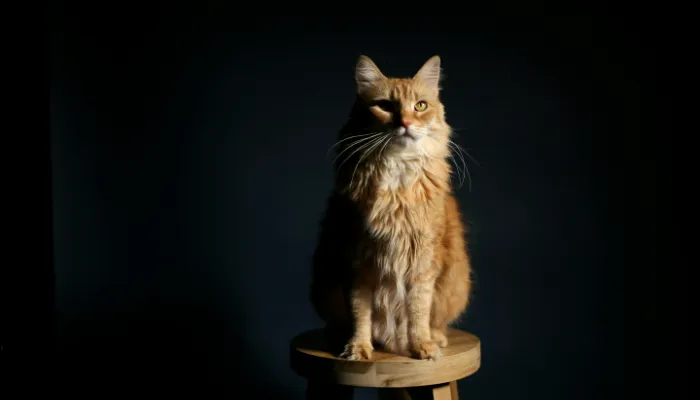Cats have a unique way of interacting with their masters. They may not be able to articulate using human language but they can communicate using a variety of vocal sounds, body movements, and actions. If you’ve wondered, how do I say “hello” in cat translator? Then you’re not alone! Knowing the ways to greet a cat can significantly help strengthen your bond or make interactions more wonderful.
This guide will discuss how cats do communicate with each other, how you can say hello in a cat translator, and how to respond to their replies.

How Cats Communicate
Now, before I get to explain ‘how do I say “hello” in cat translator”,’ it is important that I educate you on how cats communicate first. In contrast to dogs, whose primary means of communication include barks and wagging, a cat makes it’s own sounds and a combination of verbal sounds, facial expressions and body action.
Sounds Cats Use to Communicate
Cats can express their feelings using different sounds. Here are a few of the more common ones:
- Meows – Used as a bark or a call or when inquiring for something.
- Purring – Can express satisfaction but sometimes means there’s discomfort.
- Trills and Chirps – Can be used by mother cats to get the attention of the kittens or when a cat is greeting a human.
- Hissing and Growling – Signs of fear or aggression that serve as a method of self defense.
Physical Communication and Emotions
Apart from using their voice, cats use their body and face to communicate.
| Body Language Of Cats | Interpretation |
|---|---|
| Slow Blinking | Felines use this as a form of greeting which denotes love and care. |
| Raised Tail | Denotes friendliness. |
| Flattened Ears | Shows fear, aggression or annoyance. |
| Arched Back | A defensive attitude when feeling under threat. |
Now that we have a basic understanding of feline communication, let’s dive into how I say “hello” in cat translator in a language they understand.
Different Ways To Say “Hello” in Cat Translator?
If you are asking, “how do I say “hello” in cat translator?”, you know that cats have more than one way to greet their owners. Unlike people who talk, cats communicate with very delicate gestures.
Slow Blinking – The Feline Greeting
One of the most effective ways to say hello to a cat is through slow blinking. For cat owners whomnaladger feed them care, trusting them fully, cats reward such devotion by walking on their owner’s feet.
To return the favor, you can:
- Look directly into your cat’s eyes.
- Close your eyes slowly for a second or two.
- Observe what they do next. If they close their eyes in return, they have accepted your greeting.
Talk to Your Cat in a Low Calm Voice
While we lack a sufficient cat translator, some scholars claim that a pet recognizes their owner’s voice. In your case, try to greet your cat by:
- Using a very low and comforting voice.
- Do not speak in loud or sharp tones.
- Attempt to copy the juat above “mrrp” or “chirp” sound which is made by cats as way of greeting.
Gentle Scratches Accompanied by Nice Tails Position
Nose touching or rubbing is a common way of saying hello for cats. You can do it by:
- Offering your hand for your cat to smell it.
- Softly stroking their chin or head when they accept it.
- Looking at their tail. A slightly bent up tail means they are happy to see you.
These tips should allow you to “say hello” to your pet the feline way!
How Do Cats Respond When Being Greeted?
Similar to human beings, cats possess a range of characteristics which dictate how they respond to greetings and commands. There are some who will respond with lots of excitement and there are some who will be much calmer.
Signs Your Cat Is Happy To See You
If your cat expresses joviality upon seeing you, they might:
- Purring due to feeling content.
- Rubbing their head against you to scent mark.
- Kneading with paws, a sign of being relaxed.
Signs Space is Required by Your Cat
Not every feline is welcoming at first. Others may take a while before accepting you. Signs of your cat restriction zone includes:
- Moving tail (implies annoyance).
- Retreating or turning away.
- Ears lying flat alongside hissing.
If your kitty turns unresponsive in the positive way, avoid forcing interaction. Respect their comfort level and attempt later.
Training Your Cat to Respond to Greetings
If you wish to enhance your relationship with your cat, you can teach your feline to respond to greetings. While cats are self sufficient, they are able to learn and follow basic set regulations.
Techniques of Supporting Positively
To enhance the likelihood of a cat responding positively to greetings:
- With ‘Treats’ Reward interaction with them.
- Use toys for Playtime to make interacting more fun.
- Voice Simulators Repeat phrases like ‘hello’ in soft tone to help them associate the sound.
Creating a New Routine
Cats are creatures of habit. Greeting your cat in the same way every day will make them more likely to recognize you, and respond to your greeting.
With these tips in place, there’s no reason why your cat shouldn’t start associating your greetings with good things!
Mistakes To Avoid When Approaching a Cat
Most cat owners commonly make the same simple errors while attempting to greet and engage with their cats. Understanding and avoiding these mistakes will have a positive impact on your relationship with your cat.
Do Not Stare At Your Cat
In the world of cats, staring straight into someone’s eyes for an extended period is considered fighting behavior. Instead of seething, try blinking slowly as a method to show that you are not a threat.
Avoid Forcing Touch
While some cats are more affectionate and snuggly, other feline friends are a lot more distant and enjoy their personal space. A friendly cat relationship implies letting each cat pick how intimate or physical they want to be.
Ignoring Tail Posture
A cat’s mood is directly dictated by the position of its tail. Many cats express irritation by the aggressive flicking of their tail. If such a thing occurs, it would be wise to take cover.
These tips will allow every cat owner to greet their cats the right way. These tips should be sufficient in avoiding unwanted irritation in cats.
Conclusion
So, what is the sensible response to, “how do I say “hello” in cat translator?” The answer relies heavily on reasoning and relying on the instincts and mannerisms of your cats.
Through slow blinking, soft vocalizations, or gentle gestures, you can say hello in a language understood by your cat such that interaction becomes smoother and your bond is stronger.
Responding to other’s instructions helps you learn new things. In this case, getting to know other ways through which a feline can be greeted and remembered. The next time someone asks, “How do I say “hello” in cat translator?”, you’ll be able to share all the ways cats communicate their greetings and how humans can respond effectively!
